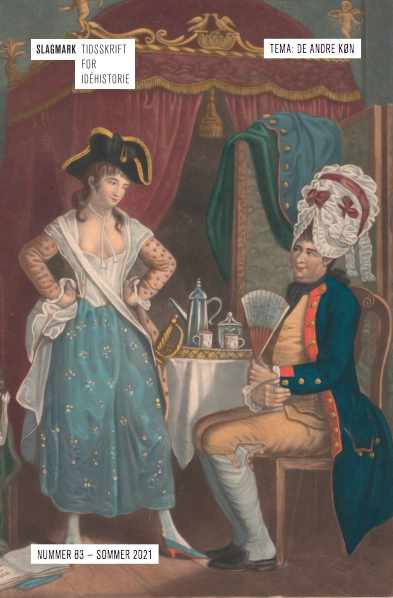Det naturlige og æstetiske køn: Køn og kroppe hos Mary Wollstonecraft
DOI:
https://doi.org/10.7146/slagmark.vi83.144201Nøgleord:
gender, body, Wollstonecraft, Burke, RousseauResumé
Since the 1970s, there has been an increased focus on gender in the research literature concerning British philosopher Mary Wollstonecraft, which most likely is caused by the increasing interest in the social aspects of gender inspired by poststructuralist thinking. Although such readings have been illuminative and fruitful, focusing on the social and the interconnections between Wollstonecraft and modernity seems to have brought with them a neglect of two interesting aspects of Wollstonecraft’s notion about gender. On the one hand, her thoughts on the body seem somewhat underexposed, while her impact on the subsequent British romanticists is equally neglected. The article focuses on these two aspects. Here the analyses are based on Wollstonecraft’s discussions with Jean-Jacques Rousseau and Edmund Burke about the relations gender has to nature, bodies, and aesthetics; discussions which inform a conception of gender that the later romantics would take inspiration from.
Downloads
Publiceret
Citation/Eksport
Nummer
Sektion
Licens
Ophavsretten til artiklerne i Slagmark deles mellem forfatter og Forlaget Slagmark.
Artikler og tekstmateriale publiceret i Slagmark må citeres, downloades og videresendes for ikke-kommerciel brug, under forudsætning af normal akademisk reference til forfatter(e) samt tidsskrift, årgang, nummer og sider.
Brug og distribution af tekstmateriale både i form af papirkopier og elektroniske kopier, til undervisningsbrug på uddannelsesinstitutioner og intern brug er tilladt efter aftale med Copydan Tekst & Node. Brugen skal ske inden for aftalens rammer.
Artikler og tekster må kun genudgives med eksplicit tilladelse fra forfatter(e) og tidsskriftet med en anerkendelse af værkets første publicering i nærværende tidsskrift.





